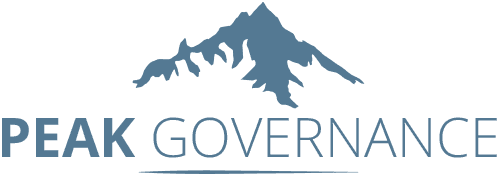Calculate Risk-Reduction ROI: A Guide to Smart Decision-Making
In the ever-evolving landscape of business, one thing remains constant: risk.
Every decision, from expanding into new markets to implementing new technologies, carries a certain level of risk. While some risks are unavoidable, managing and reducing them is crucial for ensuring a company's long-term success. This is where the concept of Risk-Reduction Return on Investment (ROI) comes into play.
As a seasoned expert in risk management, I'm here to guide you through the process of calculating Risk-Reduction ROI and shed light on the significant business benefits of implementing a risk reduction strategy. So, grab a cup of coffee, and let's dive into the world of risk management.
The Basics of Risk-Reduction ROI
Before we delve into the practical aspects, let's establish a clear understanding of what Risk-Reduction ROI is all about. At its core, Risk-Reduction ROI is a measure of the return on investment a company can expect to achieve by reducing specific risks. It quantifies the financial benefits of risk mitigation and helps organisations make informed decisions about resource allocation and risk management strategies.
The formula for calculating Risk-Reduction ROI is relatively straightforward:
Risk-Reduction ROI (%) = (Cost Savings Due to Risk Reduction / Cost of Risk Reduction) x 100
In this equation, "Cost Savings Due to Risk Reduction" represents the amount of money saved as a result of implementing a risk reduction strategy. This could include savings from avoided losses, decreased insurance premiums, or increased operational efficiency. On the other hand, "Cost of Risk Reduction" encompasses all the expenses associated with implementing and maintaining the risk reduction measures, such as training, technology upgrades, or personnel costs.
Business Benefits of a Risk Reduction Strategy
Now, let's explore why calculating Risk-Reduction ROI is not just a mathematical exercise but a crucial aspect of sound business strategy.
1. Enhanced Profitability
Implementing a robust risk reduction strategy can lead to significant cost savings. By identifying and mitigating potential risks before they escalate, companies can avoid costly disruptions and minimise losses. This directly contributes to improved profitability, allowing resources to be redirected towards growth and innovation.
2. Competitive Advantage
In today's highly competitive business environment, having a solid risk reduction strategy can set your company apart from the competition. Customers and investors alike value organisations that proactively manage risk, which can enhance your brand reputation and attract new opportunities.
3. Sustainability
Sustainability is not just about environmental concerns; it also encompasses financial stability. A well-executed risk reduction strategy ensures that a company can weather storms, economic downturns, or unexpected crises. It's a safeguard for the long-term viability of your business.
4. Better Decision-Making
Quantifying the benefits of risk reduction through ROI analysis provides valuable data that can inform future decision-making. It helps prioritize which risks to address and where to allocate resources effectively, ensuring a more efficient and strategic approach to risk management.
How can Peak Governance help?
Now that you understand the importance of calculating Risk-Reduction ROI and the benefits of a robust risk reduction strategy, it's time to take action. Knowledge is the first step towards effective risk management, and our risk management training courses are designed to equip you with the skills and knowledge you need to make informed decisions and protect your business.
Whether you're a seasoned professional or new to the world of risk management, our courses cater to all levels of expertise. Join us, and let's embark on a journey to make your business more resilient and prosperous.
Don't wait until the next crisis hits; act now and invest in your company's future. Sign up for one of our risk management training courses today and take the first step towards calculating your own Risk-Reduction ROI.
Remember, in the world of business, knowledge is power, and risk reduction is the key to a brighter, more secure future.
At Peak Governance, we understand the unique challenges faced by businesses of all sizes. We specialise in developing customised Risk Management Frameworks tailored to your specific needs.
Here's how we can assist you:
Risk for Profit Workshops: Our Risk for Profit workshops can bring significant benefits to your business and provide you with the knowledge, tools, and strategies to identify and assess risks, make informed decisions, and turn potential threats into opportunities for profit.
Risk Reduction Techniques: Our comprehensive range of risk reduction techniques can help you identify, assess, and mitigate potential threats, allowing you to navigate uncertainties with confidence. We cover various aspects of risk management, including risk identification, risk assessment methodologies, risk mitigation strategies, and crisis management.
Risk Management Training & Frameworks: Our Risk management training programs are designed to equip your team with the necessary skills and insights to navigate risks confidently.

